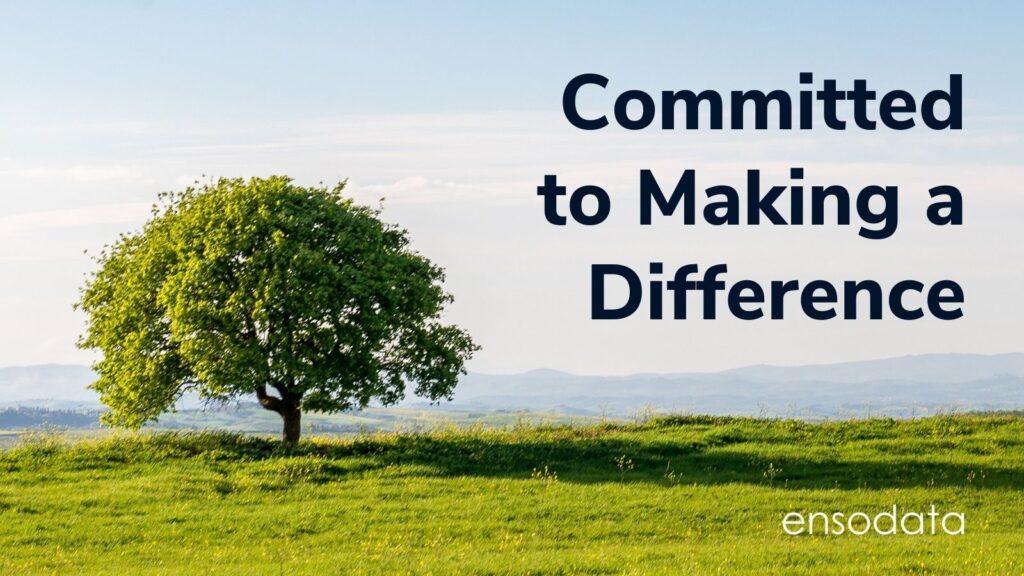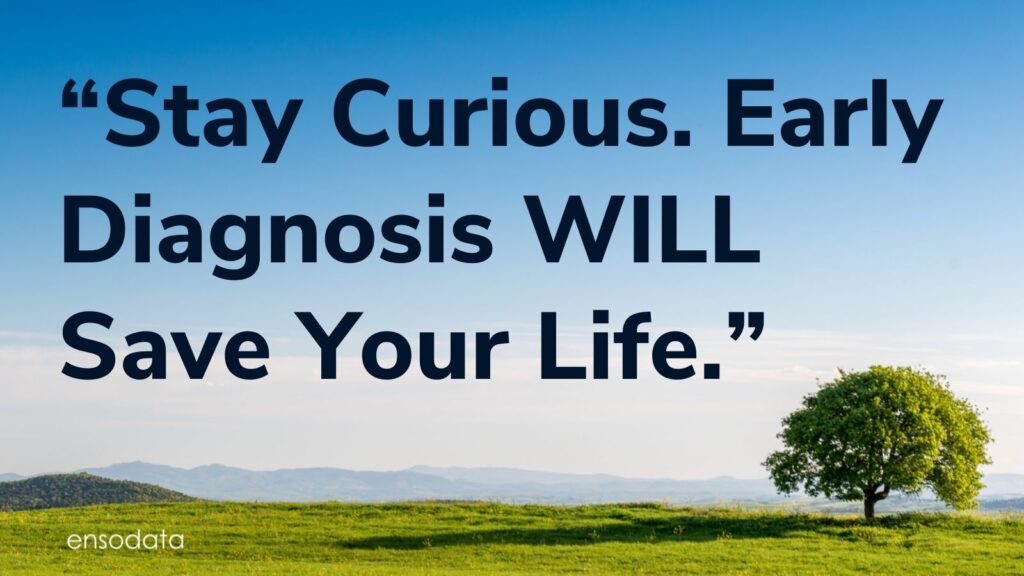EnsoData’s Sandy Smith shares her personal story on why she is devoted to supporting those who are reaching and treating more patients with Obstructive Sleep Apnea (OSA)
This month’s sleep story features one of our own, Sandy Smith, who serves as the Director of National Accounts. Sandy joined EnsoData in November 2021, and she brings a unique perspective to the team: she experienced one of the worst results of obstructive sleep apnea (OSA) firsthand, the devastating passing of her mother when she was just 17 years old.
Sandy’s familial battle with OSA doesn’t stop with her mother’s death, as her teenage son and others close to her suffer from OSA, as well. Her burden is also the personal motivation she brings to her work that allows her to see the big picture and share that impactful vision with healthcare executives around the country. With that, we’re going to turn it over to Sandy, as she shares her emotional story publicly for the first time.
Written by: Sandy Smith, EnsoData Director of National Accounts

My Mother was Always Snoring
Throughout my childhood, listening to my Mom snore was just normal. Loud snores. Constant snores. Snoring when we traveled and stayed in a hotel room. Snoring when she napped in the car. My mother was always snoring. It was so normal for me.
The morning of March 10, 1988 was normal in the same way. My mom was snoring. I was on Spring Break, and I was still trying to sleep myself, but the snores had woken me up. That’s when I heard a loud thump. It was too loud. I ran into my Mom’s room, and I saw her on the floor. I called 911, then started CPR until the firefighters showed up. I’ll always remember them showing up and the next few moments that ensued.
The part that was immediately traumatic and disturbing to me in the moment, but I now understand, was that they had to remove the door to the room in order to get all the equipment that they needed into the room. At the time, I wished that someone was there to take me out of the room, someone who could have kept me from seeing what happened next. But I stayed in the room.
Losing My Mother to a Stroke
The moment they ripped off my mother’s shirt to start the defibrillator will forever be sketched in my memory. Moments later, at 10:56 a.m., they officially announced her death. She was the same age that I am today, and I have a son who’s only two years younger than I was that tragic day. Shock. Grief. Fury. I experienced all the emotions you might expect, and it is still difficult talking about it today.
The first moment of reality and finality for me was at my High School graduation just a few months later. That was the day it was clear she was never coming back. All the moms were taking pictures, but mine was nowhere to be seen. That pain didn’t go away as my friends and I grew older. It was nauseating at times thinking of how all my friends’ moms got to participate in their lives.
Getting married and having my first child were both lonely and painful. I missed out on sharing in the small things that a mother might be there for, like baby showers, picking out my wedding dress, writing my vows, and asking “how do I know he’s the one, Mom?” … I can’t believe it’s been 34 years this month.
Often, I wonder how I can miss something I never had. I will never know what it is like to experience any of what I’ve described. Nor will my son Roman have moments with his grandma. For some reason, typing this last piece made me burst into tears realizing this……why on God’s green earth, knowing what I know and have experienced, wouldn’t I do what I can and should do so I can give to my kids what was taken from me so early?
OSA: A Deadly Comorbidity
Every year, more than
795,000 people in the United States have a stroke. This number is obviously higher than it was in 1988, but my mother was one of them. I know now, that OSA is both an
independent risk factor for all stroke patients (1) and that
stroke incidence increases with the severity of OSA (2). What I can’t do, is go back in time, and tell my mom to get screened for OSA and get set up with a CPAP machine.
I know I shouldn’t play the would of, could of game, but I am human and I still have angry thoughts. “What if she had a sleep test? What if she received the proper treatment earlier? Would she have been here to see me get married? Would she have met my kids? Would she have had more time here with me?
People don’t talk about personal health challenges for a number of reasons. For me, I refrained from sharing this story for years, largely due to emotional distress. Thinking about this story, I felt embarrassment, shame, and anger. All of these fade away when you consider the immense impact spreading information can have on other people’s lives. And so now, I’m telling my story.

My Son’s Struggles with OSA
Not only did I lose my mother to a stroke that was exacerbated by sleep apnea, but my son also struggles with the condition. He was struggling in school, he was moody, and he wasn’t sleeping through the night. So, at 14 years old, we got him a sleep test. Testing him early instead of suffering in silence gave us the information we needed.
He was suffering from an under-developed jawbone, which was causing a moderate sleep apnea response. Identifying his issue early allowed us to engage with an oral appliance, and the results were literally life changing.
In the two years since he’s been treated, he is sleeping through the night, and his grades have dramatically improved. The increase in sleep time also resulted in a huge growth spurt, improved grades, and an uptick in his mood that was a total game changer around the house. Being a teenager is stressful enough, so finally getting a real night of sleep made all the difference.
Again, it makes me wonder what might have happened with my mother if she had received similar treatment earlier on. That thought helped me make up my mind. Sleep apnea has detrimentally impacted my life, and I am ready to fight back.
Why I’m Working with EnsoData
When people I’ve known for years ask me, “why EnsoData,” my response is simple.
Together, we can make a real impact on the lives of people like my mother, my son, and countless others in my life. I believe that EnsoSleep can expedite the process of scoring without compromising quality, allowing physicians to save more lives with diagnosis and therapy.
Being entrenched in sleep apnea in my personal world, I feel a strong connection to the work I’m doing today. It was because we caught OSA early that we were able to treat my son with an oral appliance. He is among the lucky 20% who are diagnosed, and among the 60% who are adherent with treatment.
How would our healthcare system evolve if we could positively change those percentages? What if we could reduce the undiagnosed percentage just 5% to 75%? What if we could cut it to 50%? Would we see fewer strokes and heart attacks? Would we see less diabetes, dementia, and hypertension? What is the impact of diagnosing and treating more patients with OSA on a health system?
To me, it’s massive.
EnsoData is My Response
My biggest WHY for what I do for a living just became a little more personal. And it’s not slowing down anytime soon. I can’t help but wonder how earlier diagnosis might have changed my mother’s life, my life, and everyone else impacted by OSA. How much heartache could have been avoided? How much time, money, and stress could have been saved?
At the end of the day, it is not about me, but rather what I can do to help support the clinicians that deliver sleep care, period! Every patient deserves a quality care experience. I truly believe that my time here at EnsoData will be the most impactful work I can do to help affect that patient experience for thousands to millions of people across the country and globe, as EnsoData aims to provide healthcare organizations with the technology they need to reach and treat more patients.
Thank You, Sandy
We’re truly appreciative to have you on our team, and for your bravery in sharing your sleep story. If you’d like to read other sleep stories in our series, try out a few of the options below.
References
- Barone DA, Krieger AC. Stroke and obstructive sleep apnea: a review. Curr Atheroscler Rep. 2013;15(7):334. [PubMed]
- Harbison J, Ford GA, James OF. Sleep-disordered breathing following acute stroke. QJM. 2002;95(11):741–747. [PubMed]








